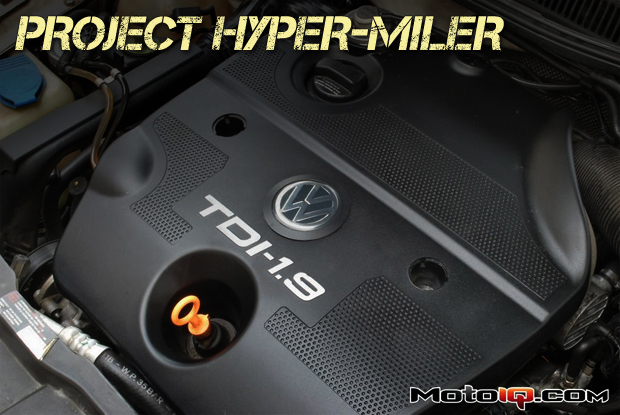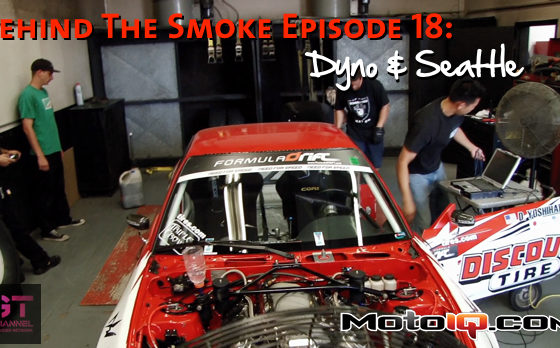,
 |
| A clean engine is a happy engine. Cleaning your engine not only looks better, it also makes leaks easier to pinpoint, and prevents you from looking like a coal miner every time you work on it. |
The next thing you need to do after cleaning your new-to-you ride is reset your maintenance clock to zero, especially if your car has passed the century mark on the odometer. To freshen our car, we replaced all fluids, filters, timing belt, and all other common maintenance items. Additionally, we tackled some problems that had already shown up, as well as some problems that were going to show up in the future. Sounds easy, but during this project we’ve discovered that nothing is more frustrating than to simply fix things without making it faster in some way. This is doubly true on a vehicle whose drivetrain design team seems to have been made up of independent individuals who had absolutely no conversation, exchange of ideas, or contact with the other members of the team until final design review. We’re pretty sure that final design review went something like this:
“Claus, Dieter, Hans and Frans, are you ready for ze final de-sssign review for ze ALH TDI engine?”
“Ja. Let’s discusssss zissss engine over ssssome Doppelbocks at ze local vatering hole.”
At which point, they decided to get hideously drunk, Claus makes fun of Dieter’s frau, a fight breaks out, and the final design review never happens, resulting in a drivetrain that makes you want to punch babies as you’re working on it. We’re also fairly certain that there was a huge surplus of one-time-use torque to yield (TTY) bolts in Germany when this car was designed. More on that later.
If you find yourself in the unfortunate situation of actually having to work on this car – and likely many other cars built by Ze Germans – you’re going to need, at minimum, the following tools: triple square bits, a metric ball-end allen socket set, wobbler extensions of every imaginable size, hose clamp pliers and a hand held vacuum pump. VW also has some specific tools –read: expensive – that are necessary for performing regular maintenance service, but we’ll gripe about them later too.
 |
| Various implements of torture you’ll need to work on your TDI – and likely other cars built by ze Germans. The funny looking bits on the right are triple-square, or 8-point internal drive sockets. |
Our first order of business was to clean the intake manifold. Our theory regarding the powertrain development team definitely gains ground here, as we have no other explanation for why anyone thinks it’s a good idea to mix sooty diesel exhaust with oil vapor just inside the intake manifold – as opposed to plumbing the EGR gasses right next to the intake ports or controlling oil vapor like the SR20 does. The end result? Our intake manifold was so clogged with black, tarry soot that the remaining hole in the intake was just large enough to fit your pinky into. We are absolutely amazed that thing made any power whatsoever. To clean this mess out, there are a couple of methods to effectively evict the soot. You can burn it out with a torch, take it to a mechanic with an ultra-sonic cleaner, or clean it with solvent. Since we’re in CA, possibly setting the county on fire burning this heinousness out didn’t seem like a good idea, and cheap (who owns a Sentra and a diesel car that isn’t cheap?), we decided to soak it in some gasoline that was getting too old for even the lawnmower to burn. First, we knocked off as much of the soot as we could with screwdrivers, bailing wire, and wire brushes, then tossed the manifold in a 5 gallon drum of gasoline and forgot about it for a day. After soaking, the manifold was cleaned with parts wash, hit again with screwdrivers, brushes and bailing wire, and finally the remaining soot was knocked out with a pressure washer. After reinstallation, the car revved freely (for a diesel) to redline, and the powerband no longer hit a brick wall at 2500rpm like before.
 |
| Disgusting. This is what happens when someone decides that introducing oil vapor from the crankcase to diesel soot from the EGR is a good idea to do in the plenum. For reference, that remaining hole in the middle was less than 3/4″ wide. Did we mention disgusting? |



